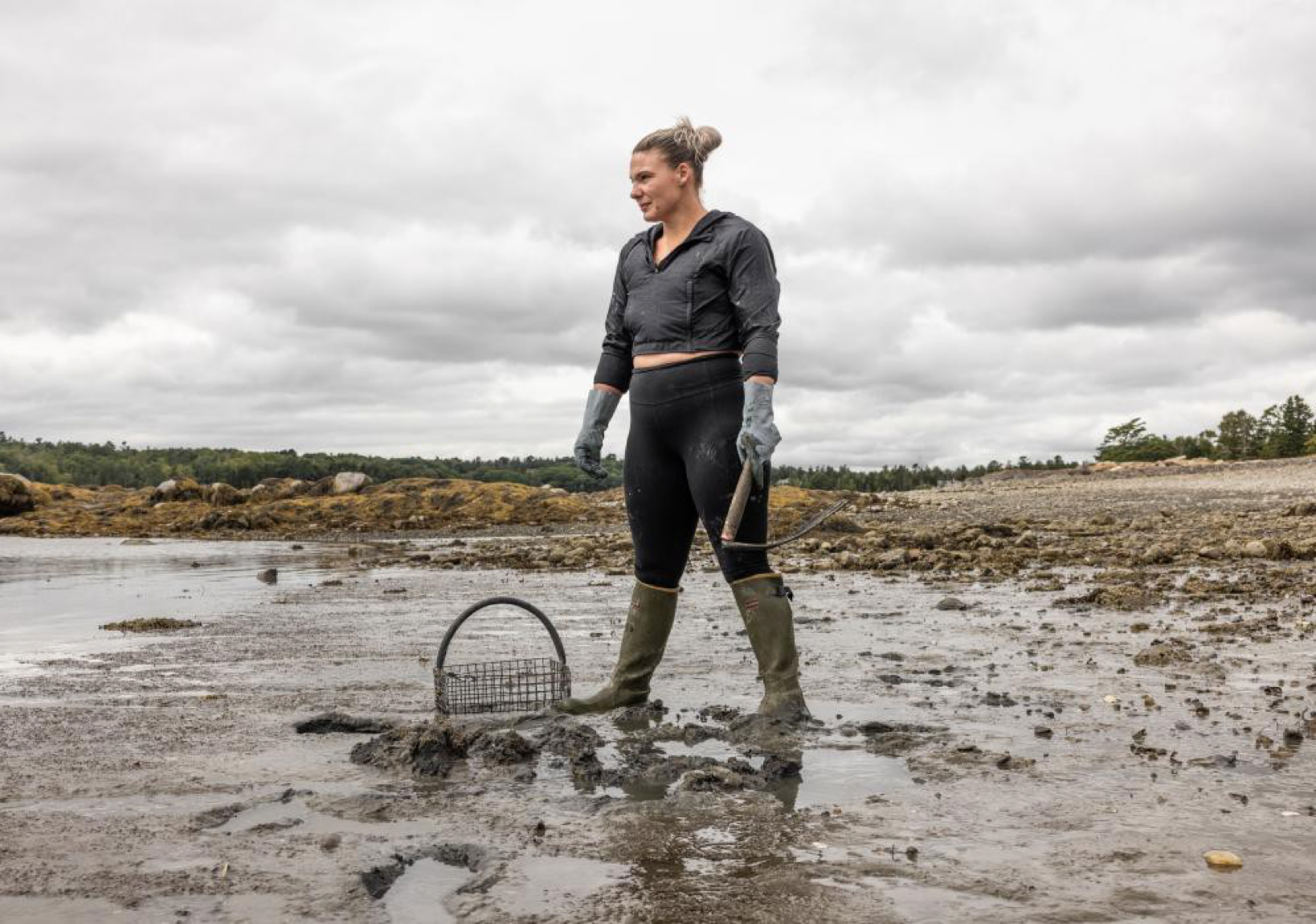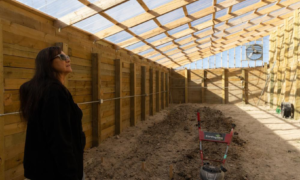Soft shell clams are declining and those who depend on the state’s second-most-valuable fishery are having to adapt.
Clams have long been a source of food and income for a variety of people in Maine: the Indigenous Wabanaki, commercial harvesters or anyone willing to dig in the mud. But their populations are declining steeply.
Maine produces 62% of the nation’s softshell clams. They are the second most economically valuable fishery in the state behind lobster and sustain people’s livelihoods up and down the coast.
Since 1980, however, the number of clams harvested has declined by nearly 75%, primarily because of green crabs (Carcinus maenas), which prey on soft shell clams. These invasive predators, which first came to the Gulf of Maine on ships in the 1800s, have seen their populations boom as the climate crisis causes water temperatures to rise, creating the perfect conditions for the green crabs to thrive.
Research from the Downeast Institute and the University of Maine at Machias in 2018 found that green crabs were feasting to such an extent that more than 99% of juvenile clams died before reaching adulthood. The state’s clam fishers are concerned not only about a loss of income but a loss of a way of life.
Shellfish middens – piles of leftover shells scattered along Maine’s coastline that can be up to a meter thick – show that the Wabanaki people have been harvesting and stewarding clams, as well as mussels and oysters, for millennia. The Passamaquoddy, one of the four federally recognised Native American tribes in Maine known collectively as the Wabanaki, call Bar Harbor, in Maine’s Acadia national park, Moneskatik, which translates to “the clam digging place”.
For the Passamaquoddy people, the decline in clams threatens their income and traditions. “You just don’t see the abundance that you used to,” says Marvin Cling, environmental manager for the Passamaquoddy Nation.
It also raises questions about land access. While they have rights to harvest on their reservation, they do not have access to the neighboring mudflats where their ancestors harvested. “We belong to the environment and when we get cut off from the environment we lose the value that connection brings, the ability to produce what you want and enjoy your fruits of labor,” Cling says.
Others in Maine are concerned about the loss of a livelihood that offers them independence and flexibility.
Four years ago, Cathy Pickard, a newly single mother of three young children in Lamoine, Maine, was looking for a way to support herself that would fit in with parenting demands. She found it in the coves of Frenchman Bay, when she picked up a clam rake. “It’s life-changing,” she says.
Clam harvesting is accessible in part because of a low cost of entry. Harvesters don long rubber boots, take a metal rake and bag, and walk or boat to mudflats at low tide. They look for slight depressions in the mud, then dig their rakes in, turn the mud over, and begin picking out the clams. “If you are willing and want to do the work, you can go out there and make a living,” says Sara Randall, associate director of the marine research non-profit Downeast Institute, who has been studying clams and green crabs for nearly a decade.
Yet, clams are noticeably harder to find these days, Pickard says. “When I started you could just jump in a canoe and go anywhere and find clams,” she says. She has to work harder and longer for fewer clams. “Now, I’d say there’s probably half the clams. Something has changed.”
Randall is one of many researchers trying to work out how to halt the decline. On a sunny day in early September, she strides through the mud toward 16 small boxes in Scarborough, Maine. They form a monitoring station run by a collaboration between the Downeast Institute, state, local and tribal shellfish managers and clam harvesters. The aim is to measure how many baby clams are settling out of the water column on to the mudflats at 25 sites along the coast, including two on Passamaquoddy territory.
The box frames are made of wood, and covered in mesh on the top and bottom with tiny openings, which allows the baby clams to enter the boxes as they settle from the water column to grow into adults. Because clams feed on phytoplankton and other organic matter floating through the water, the boxes allow them to eat and grow protected from the green crabs. Randall and her team compare the number of clams inside the boxes with the number of clams surviving unprotected in the adjacent mud.
Her team has found that baby clams grow well inside the boxes when predators are excluded, but 99% of baby clams outside the boxes did not survive their first year. Randall says their work has demonstrated that predators, rather than ocean acidification or lack of baby clams, are preventing clams from surviving their first year of life.
Projects such as these are popping up along the coast, where scientists, towns and harvesters are collaborating to understand what is driving clam decline and how to adapt to it. “The data show we have to adapt our management and our methods to the warming water. That’s our only chance to sustain the fishery,” Randall says. Traditional harvesting methods that simply allow for wild gathering of clams may be a thing of the past, she added.
But some clam harvesters are concerned about the consequences. Adaptively managing the clam fishery, as research increasingly suggests is necessary, would involve more labor-intensive measures to protect clams from predators – for example, seeding certain mudflats with baby clams, installing predator protection, or restricting harvests in some places. For some, these activities are less like independent gathering and more like aquaculture. Randall, who has collaborated with harvesters all over the state, says: “There are people who don’t want to hear it … Change is hard.”
But for Joe Porada, a clam harvester of 39 years and collaborator with the Downeast Institute, there is hope in these adaptations. Although the global climate situation can feel disheartening, “like a train that can’t be stopped”, he says, he “is seeing rejuvenation and some success” on the flats.
These adaptations may not slow down the climate crisis, but they can address local problems in a way that is tangible and encouraging, Porada says. “It feels like we need to do something about it and we’re trying to do something about it.”
Whatever happens, Cathy Pickard knows she has found the industry she wants to stay in. “It’s like my work is my time. I love clamming. I love being on the water. To me, that’s all I’ll probably ever do for the rest of my life.”




